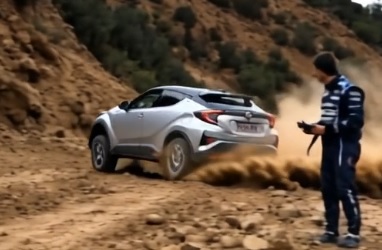Is it possible to control a car via remote control?
The short answer is yes, studies and practical demonstrations have been conducted on the possibility of controlling a car with an external device (remote control or wireless interface). Below are some references and contexts where this topic has emerged:
Cybersecurity Research (Car Hacking)
In 2015, researchers Charlie Miller and Chris Valasek demonstrated how it was possible to remotely compromise a car (a Jeep Cherokee) and control its steering, brakes, and other functions via a wireless connection. Although the goal was to show vulnerabilities and not a "legitimate" use of a remote control, it remains a practical example of remote control.
Experimental Vehicles and Prototypes
Some universities and research centers (often in collaboration with car manufacturers) have developed prototypes of cars that are partially or fully remotely controllable to study, for example:
- Teleoperated driving for extreme situations (inspections in hazardous places).
- Automated valet parking (similar commercial functions can also be found in some recent models, controlled via smartphone).
- Various automotive robotics projects (e.g., in DARPA competitions) have included remote control components before transitioning to fully autonomous driving.
Television and Film Industry
For safe action scenes (stunt driving), cars that can be driven remotely are used so that the operator inside is not at risk. This is a more "practical" than "academic" field, but it demonstrates the feasibility of the technology.
App Control and "Smart" Systems
Some car manufacturers offer smartphone apps capable of executing basic commands (door opening/closing, engine start, assisted parking). While not a complete "remote control" for driving, the trend of remotely controlling car functions is already in place. In theory, expanding these functionalities could enable full remote control (of course, with significant security risks if not well protected).
Security and Legal Considerations
The creation of fully teleoperated cars is technically possible but faces significant regulatory obstacles (approvals, traffic regulations, public safety). The idea of a "remote control" that fits in your pocket, allowing anyone to control a driverless car, raises huge concerns regarding responsibility and cybersecurity.

Here are some car manufacturers that offer (or have offered) remote control functions via apps, although the features vary depending on the model, market, and subscribed services:
Tesla
Through the official app (Tesla App), you can open/close the car, start the conditioning, monitor charging, and even move the car at low speed using the "Summon" function (in countries where it is allowed).
BMW
With the BMW ConnectedDrive service and the dedicated app, some models allow you to lock/unlock doors, turn on lights, start the air conditioning, and, on certain high-end models (e.g., Series 7), perform remote parking maneuvers.
Mercedes-Benz
The Mercedes me app allows you to control several functions: door locking/unlocking, vehicle location, remote engine start (where legally permitted), and climate programming.
Hyundai & Kia
The Blue Link (Hyundai) and UVO (Kia) services offer functions for locking/unlocking, starting the engine, vehicle location, and remote control of certain parameters (fuel levels, maintenance, etc.).
Ford
With FordPass on compatible models (e.g., some SUVs and trucks), you can start the engine, lock/unlock doors, and monitor driving data and vehicle maintenance.
General Motors (Chevrolet, Cadillac, GMC, Buick)
Through OnStar and their respective apps, you can activate lock/unlock, remote engine start, use the horn and lights to locate the vehicle, as well as security/assistance options.
Toyota
Some models support the Toyota Remote Connect service, which allows you to start/stop the engine (with time and legal limitations), lock/unlock doors, check fuel levels, and locate the vehicle.
Nissan
NissanConnect Services offers similar functions on some models: remote start, lock/unlock, vehicle status notifications, and other remote commands.
Important Note:
Specific features (remote start, remote-assisted parking, etc.) depend on the individual model and may require subscriptions to premium services. Local regulations may limit or prohibit the use of some of these functions, particularly engine start and autonomous/semi-autonomous driving via app.
Conclusion:
Academic studies, experimental projects, and hacking demonstrations have shown that remote control of a car is feasible. In practice, it is already seen in some limited functions (like app-based parking) or in teleoperation prototypes. However, the commercial spread of a full "remote control" for cars is heavily limited by cybersecurity concerns and legal constraints.
![]() Remote control cars and real car hacking
Remote control cars and real car hacking 


